

Manchester
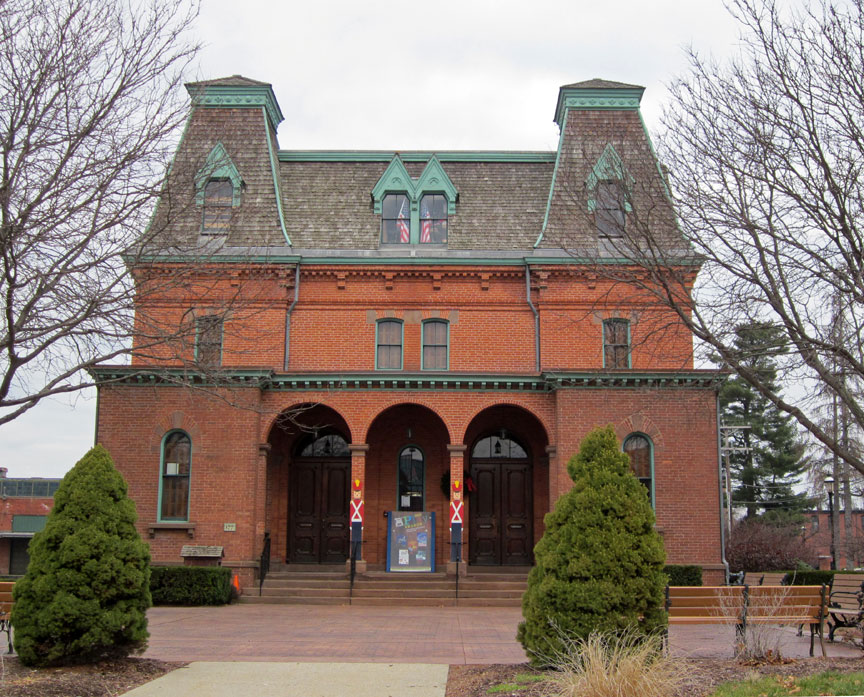
Cheney Hall
Manchester is a township and city in
Hartford County, Connecticut, United States. As of the 2010 census, the town had
a total population of 58,241.

Cheney Hall is located at 177
Hartford Rd., in the heart of the Historic District. The building is an historic
Victorian structure and today still serves the purposes for which it was
originally built: theatrical and musical events, parties, balls and banquets,
and lectures and meetings.
Cheney Hall was built by Cheney Brothers immediately after the Civil War as a
community cultural center and theater. It was designed by the artist/architect
C. H. Hammatt Billings and was dedicated in 1867 by Horace Greeley. The
architecture is that of the French Second Empire style with features including
mansard roof, brick and brownstone arches, carved oak and chestnut trim and a
magnificently restored 1866 E. & G. G. Hook tracker organ built into the rear
wall of the stage.
Over the years the Hall saw many other uses such as high school graduations,
boxing exhibitions, and as a hospital during the infamous flu epidemic of 1918,
when the usually gay hall was filled with rows and rows of beds, dimly lighted
and smelling of carbolic and ether. From the 1920's to the 1970's the Hall
served as a fabric showroom for silk and other textile products.
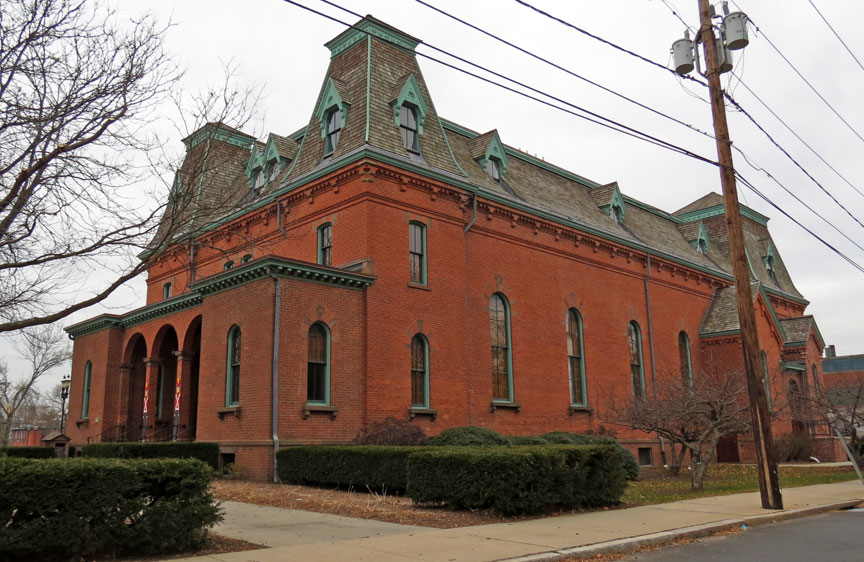
Life as a showroom came to an end in the 1970's and the Hall was virtually
abandoned. Cheney Hall was threatened by demolition by neglect until in 1978 the
Historic District was created. That was the impetus for preservation of the mill
area and also for the Hall. In 1982 the Hall was donated to the Town and the
Cheney Hall Foundation was created by the Manchester Board of Directors to
restore and operate Cheney Hall.
The Little Theater of Manchester leased Cheney Hall and agreed to assist in
fundraising for the restoration of the building. LTM also acts as the rental
agent for private functions held in the Hall. Restoration of the building was
completed in 1991 and 124 years after the original dedication, Cheney
Hall was rededicated on June 29, 1991.
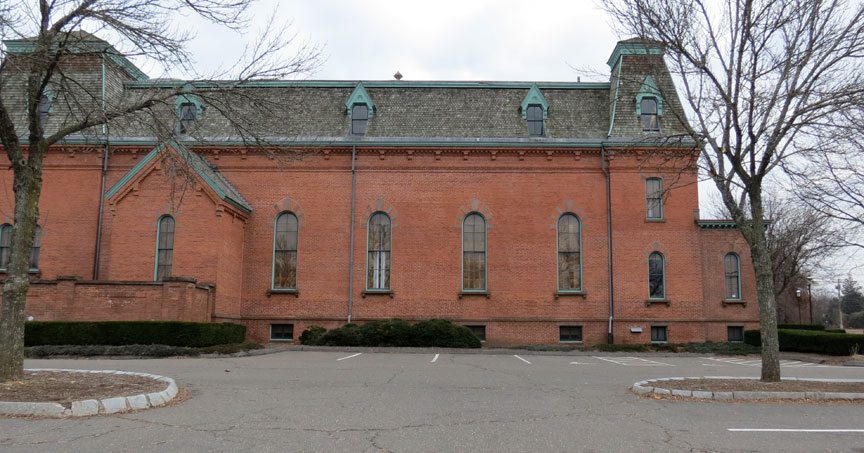
Manchester was settled by colonists around 1672 as a farming community, although
at the time it was known just as Orford Parish (the name that can be found on
the memorial to the revolutionary soldiers from the town. The many rivers and
brooks provided power for paper, lumber and textile industries, and the town
quickly evolved into an industrial center. The town of Hartford once included
the land now occupied by the towns of Manchester, East Hartford, and West
Hartford. In 1783, East Hartford became a separate town, which included
Manchester in its city limits until 1823.

Cheney Brothers Historic District
More Photos of the Cheney Brothers Historic District
In 1838, the Cheney family started what became the world's largest silk mill. Eventually, Manchester became an ideal industrial community. The mills, houses of the owners, and homes of the workers are now part of the Cheney Brothers Historic District, a National Historic Landmark.
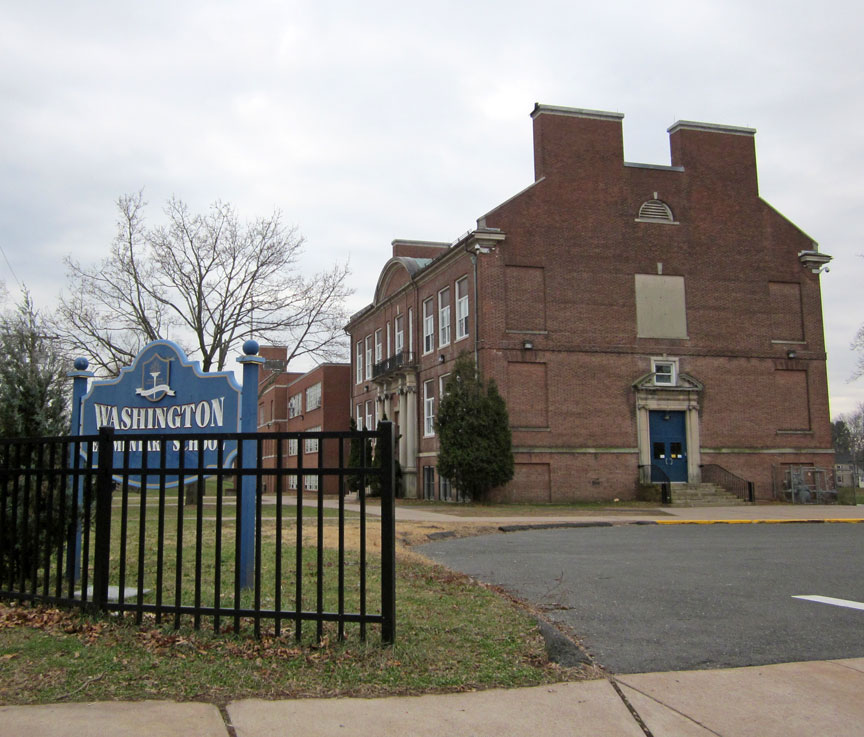
Washington School
(94 Cedar Street) This elementary school opened on April 12, 1915, and it was a great relief to the school system, after coping with the fire that destroyed the entire Ninth District School in October, 1913.
The Washington School cost $62,235.56 to build, and served the children of many Cheney silk mill workers.
Once a center of the silk industry in
America from the late 19th through the mid-20th century, the Cheney Brothers
Historic District showcases mills refurbished as apartments and includes nearby
museums.

Fire Museum
The Fire Museum is housed in a restored 1901 firehouse building. The museum's firefighting equipment and memorabilia include leather fire buckets used in Colonial times, a display showing the evolution of sprinkler systems, a horse-drawn hose wagon, a 1921 Ahrens-Fox fire pumper, and a 105-foot 1911 water tower.
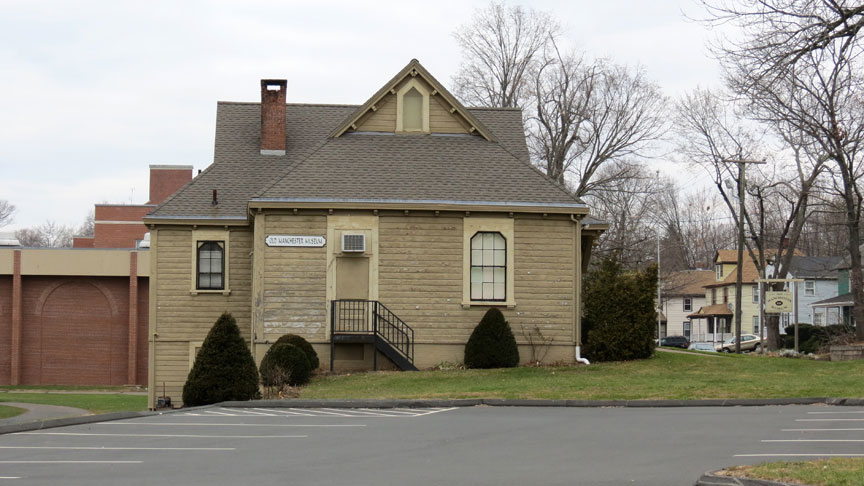
old Manchester Museum
The Manchester Historical Society's
Old Manchester Museum is located at 126 Cedar Street, next to Washington School.
From 1859-1914, the building rested on a hill west of Pine Street and north of
"School Street" (now called Cooper Hill Street). The building was known as
Cheney School, built by the Cheney family, whose name garnered world-wide fame
for its silk. The school had two rooms on either side of a central hall with the
boys' entrance on the right and the girls' entrance on the left.
In 1914, the entire building was lifted up and moved onto new foundations on
Cedar Street to make room for Cheney Brothers' new dye house. The building has
been used at various times for a day care center, storage building, paint shop,
emergency three-level school with a kitchen/cafeteria in the basement, and a
children's museum. In 1985, after hundreds of hours of volunteer labor, it
became our Museum of Local History.
Inside the museum, visitors learn that Manchester was not just Cheneyville, but
rather a historically diverse community with widespread commerce and industry.
Our exhibits reflect the diversity of Manchester, including maps with Native
American trails; Cheney exhibits; mid-1800s dresses and furniture; "School
House" corner; silverware and china; a pharmacy and medicine exhibit; the
Manchester Sports Hall of Fame; Spencer and Springfield Rifle exhibits; and
changing exhibits.
The Lutz Children's Museum has participatory exhibits covering art, history, science, nature and ethnology. The museum's permanent collection includes small live animals.
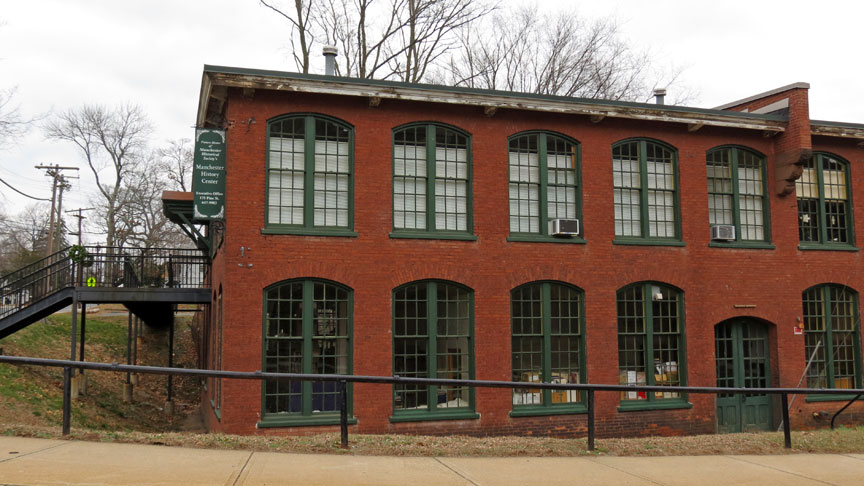
Manchester History Center
The Old Manchester Museum, focusing on local history, is operated by the Manchester Historical Society. Permanent exhibits include the Manchester Sports Hall of Fame, Cheney Textiles, Pitkin Glass Works, Christopher Spencer and examples of Spencer Repeating Rifles.
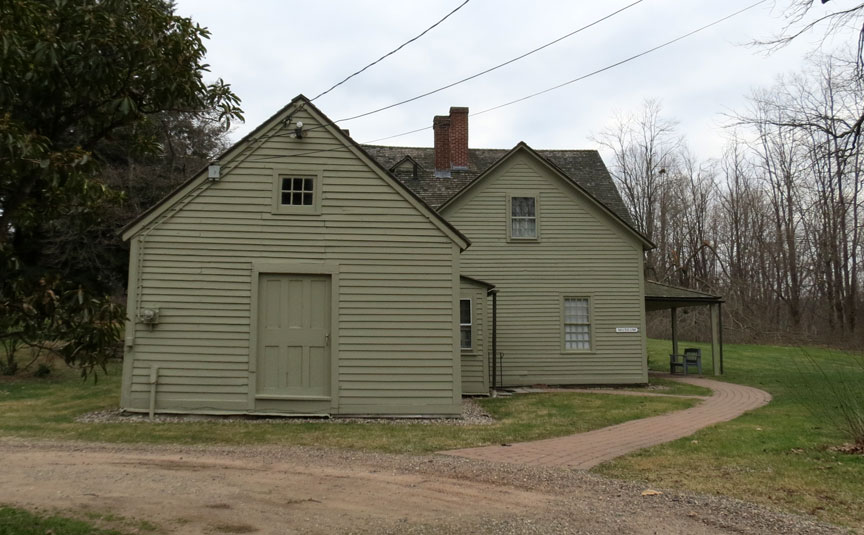
Cheney Homestead Museum
Timothy Cheney, farmer, miller and one of America's famous clock makers, built
the Cheney Homestead about 1785. A brook to the south of the home afforded water
for the grist mill which he operated with his son George.
On October 25, 1798, George Cheney brought his bride, Electa Woodbridge Cheney,
to the Homestead to "keep house". To the couple were born eight sons and one
daughter. With the exception of George Wells who had died, and Seth and John who
became well-known artists, the brothers joined in establishing the Mt. Nebo Silk
Company. The firm later incorporated as Cheney Brothers and became world famous
as a leader in the silk industry.

In the Homestead, the downstairs living room was originally a pine-paneled
keeping room with a massive fireplace and Dutch oven. The entrance door is extra
wide so "hogsheads could be rolled into the buttery at the rear." A unique
feature of this room is the built-in wall clock. When a door from the southeast
room was cut into the stairway, it was necessary to remove the clockworks. A
picture of Lake Pepin by Seth Cheney replaces the face. The tall clock in this
room is an example of Timothy's work and is labeled.
To the east is a study which was originally an 8½ x 12½ ft. bedroom in which the
children of George and Electa were born. Seth Cheney, who traveled and studied
extensively abroad, came home one summer and enlarged this room for his mother,
doing all the work himself.
An addition to the original house to the west provided a dormitory for the boys,
now furnished as a dining room. Here are to be seen a set of Chippendale-style
chairs which are attributed to Eliphalet Chapin of East Windsor.
As the Homestead is set into a hillside, the "second floor" is also on ground
level with the "front" door of the paneled parlor facing east. An early 19th
century chaise lounge with Chippendale back, a cage-top tilt table and a
secretary with candle slides are features to look for. To the south of the
stairs is one of the guest bedrooms and to the west of the parlor is a second
bedroom.
Originally a bedroom, the last room to be added to the home has been furnished
as a nursery with a spindle crib and a late 19th century doll house, all used by
Cheney families.
Much of the fine 18th Century furniture was acquired in Philadelphia by John
Cheney, the brother who was a famous engraver. Numerous drawings by Seth as well
as etchings and engravings are to be seen throughout the home.
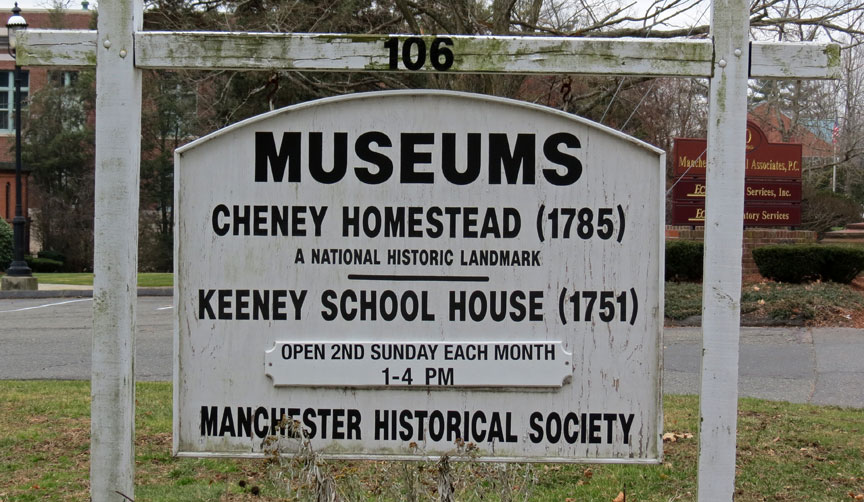
The Cheney Homestead Museum, an eighteenth century house of the founders of the
Cheney Brothers Silk Company. On exhibit are examples of period furniture and
artwork.

Keeney Schoolhouse
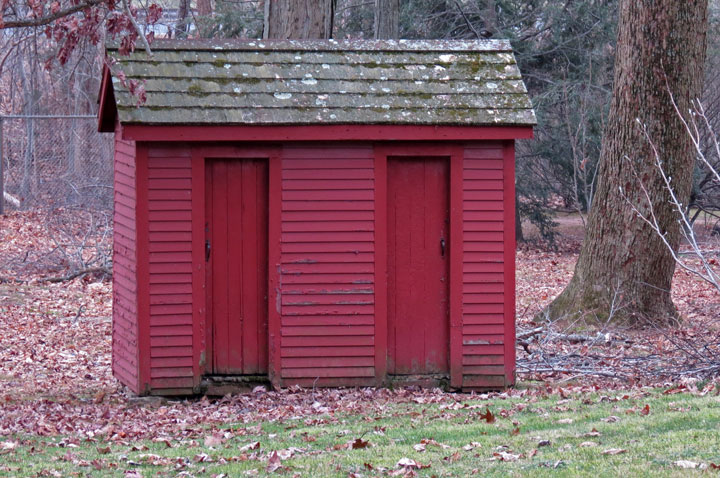
boys left, girls right
Also on site is the one-room Keeney
Schoolhouse dating from 1751. Public schools in colonial Connecticut were
operated by the Colony's official, established church, which we now call
"Congregational." The legal institution which managed them was the
ecclesiastical society. Qualified voters who belonged to the official church
were members of this society.
In 1694, the General Court of the Connecticut Colony chartered an ecclesiastical
society in the part of Hartford lying east of the "Great River," consisting of
East Hartford and the area called the Five Miles, which later became Orford
Parish and still later the Town of Manchester.
In 1745, that Society gave the people in the Hop Brook section, Manchester's
first settlement, the right to conduct a school. In 1751, the Society authorized
the erection of five schools in the Five Miles, all to be built without cost to
the Society. The Society, however, would provide money for operating them.
There is little documentation about the schools erected under this grant. The
story is that residents of the Hop Brook area built theirs in one day, using
lumber measured and cut in anticipation of the grant. Probably the other four
were built shortly thereafter.
The one-room schoolhouse was originally built on Keeney Street about 1751. We
are not certain when it ceased to be used as a school, was sold, and converted
to a farm building.
In March 1975, the Town's Bicentennial Committee voted to restore the building
and to use a site on Cheney Homestead grounds. The Manchester Historical Society
agreed to furnish and equip the building.
By 1975, however, the building had deteriorated so badly that it was not
possible to restore it. A replica would have to be built. Volunteer workers
dismantled the old structure, saving every usable piece of lumber. Fortunately,
in the usable material were a few of the plank joists, shaped by hand to a
graceful curve. Fastened to these were laths holding the curved plaster ceiling.
Curved ceilings were not unusual in larger buildings of the 18th century, but
few rural schoolhouses had them. New joists were cut to make the new ceiling.
The old building's framing showed that a fireplace was originally used for heat.
Wood burning stoves had replaced fireplaces in many old schools and it was
decided to use such a stove in this replica. The furnishings are antiques and
reproductions of the types which might have been found in the old schoolhouse.
The very small size of the classroom may surprise many visitors. The small size
is accounted for by the fact that travel was very difficult in early
Connecticut. Roads were incredibly bad. Bridges were rarities. It was impossible
for small children to walk great distances, particularly in the snow of winter
and the mud of spring. With the large families of the old days, a village of
only a few houses or a small area of scattered farms required its own school.
All labor on this replica was done by unpaid volunteers, whose service is here
gratefully acknowledged. Many gifts of materials, furniture, books and equipment
have assisted in the work. One special donation was a remarkable achievement --
the pupils of the modern Keeney Elementary School raised $1,821 for furnishing
and equipping this replica of the first school in their area.
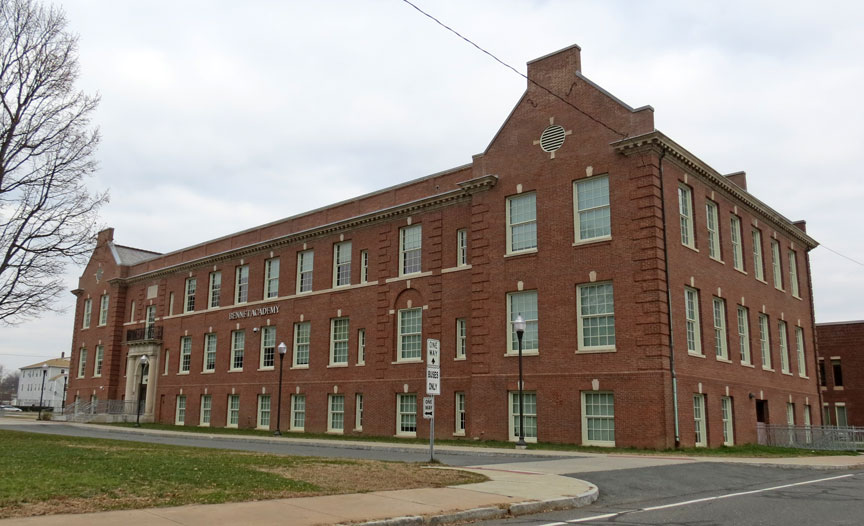
Bennet Academy
(1151 Main Street) The former Educational Square, built in 1915, is named for Principal Elisabeth Bennet. At one time the complex included a technical school, and at another time it was a junior high school. It has recently been renovated as a sixth-grade academy, but there were proposals to abandon or demolish the school complex, rather than preserve it for the students of Manchester.
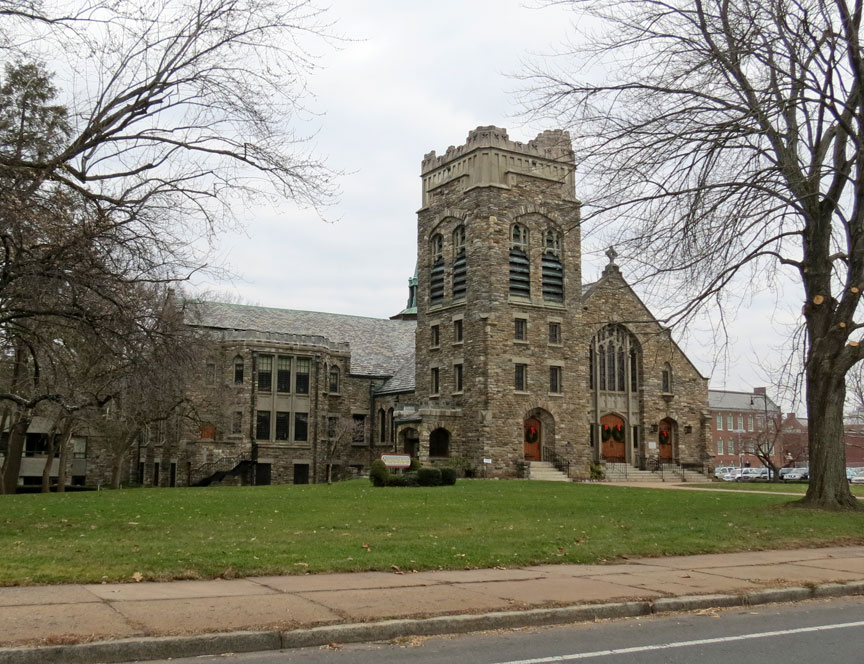
South United Methodist Church
The Methodist Church began in Manchester in the spring of 1790, when the Rev George Roberts preached a sermon at the home of Thomas Spencer of Hartford Rd.
On October 24, 1822, the cornerstone of the new East Methodist Church was laid on the site of the present Masonic Temple.
The building was 50ft by 28ft. It had two stories and a small tower. A larger building was made necessary when 100 new members were received.
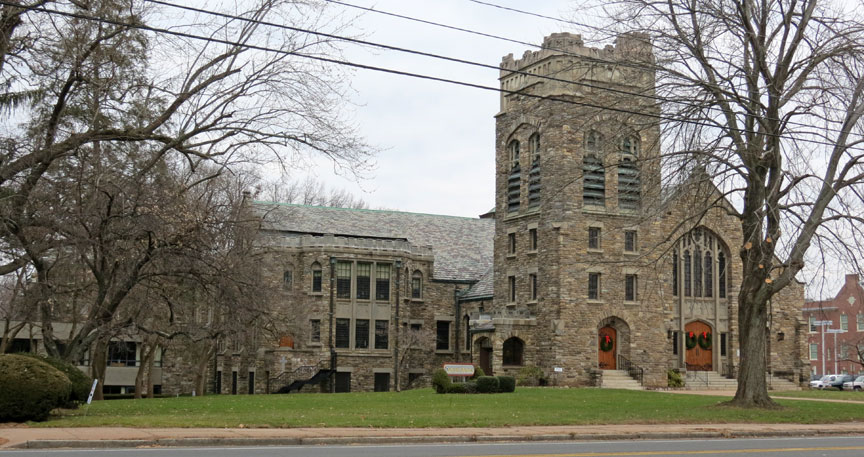
The third Church, the first one on the present site, was dedicated on November 9, 1854. In 1891, this building was enlarged and a new organ installed. At this time, Church School membership was 486.
In 1925 A. Willard Case and his constituents dream became reality when the South Church edifice was complete.
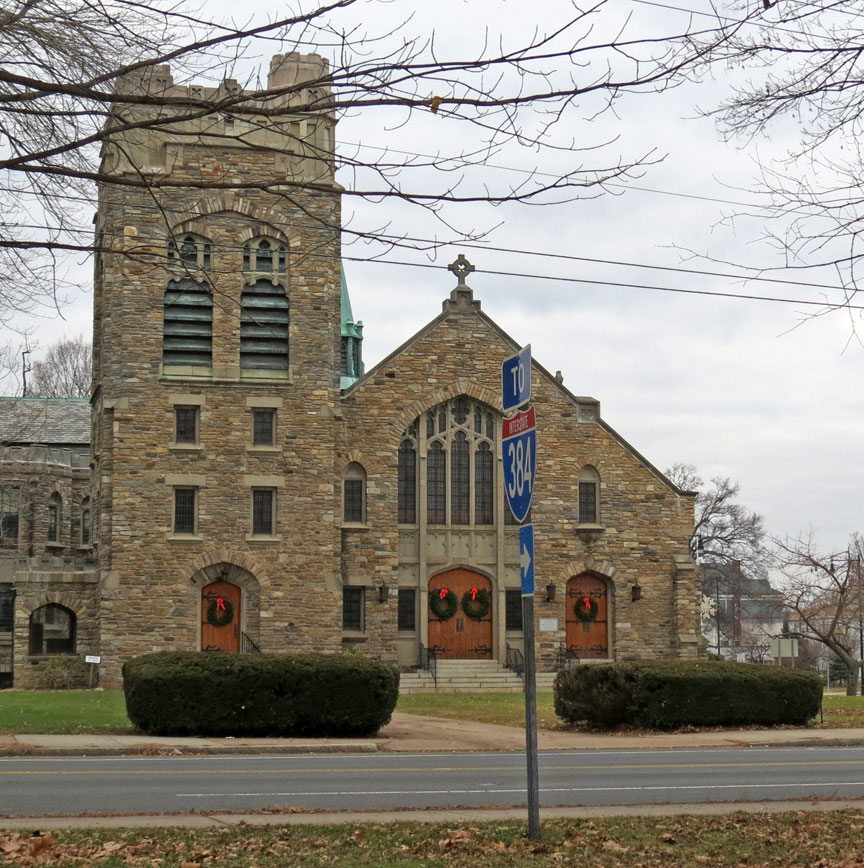
Unfortunately, the architect Arthur Eaton Hill, of Providence, RI, passed away before the building was completed. At that time, Rev. Joseph Cooper was the Senior Pastor and Rev. Russell E. Waitt, was the Associate Pastor.
The style of the church is Tudor Gothic and the building is comprised of local gray field stone and trimmed with gray cast stone.
A square tower, 67ft in height and surmounted by turreted battlements, is placed at the southwest corner of the main building, It contains the bell from the old church and a memorial set of chime bells, ranging in size from 275 to 2000 pounds.
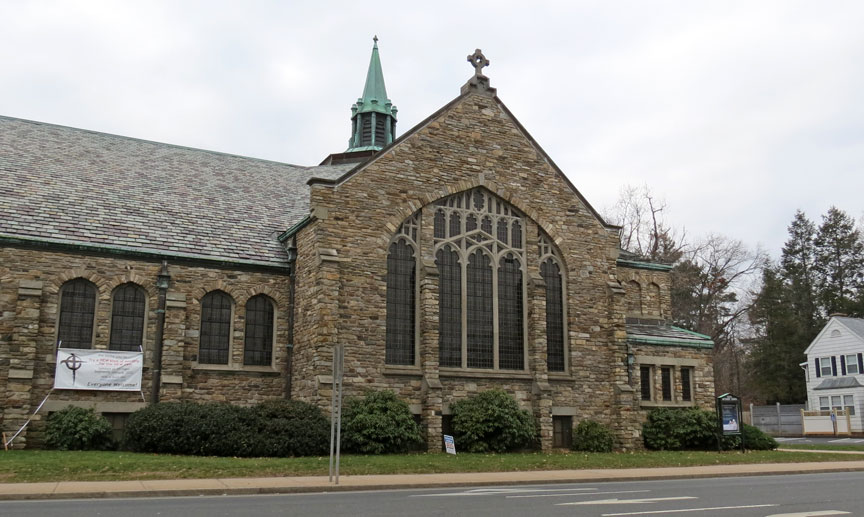
In 1958, the church purchased the land across Hartford Rd from the estate of Frank Cheney, Jr., which included two dwellings situated on ten acres of land. The dwellings have been used various way throughout the years.
In the early 1970′s the new education wing was added to the church structure and is presently being used for educational purposes.
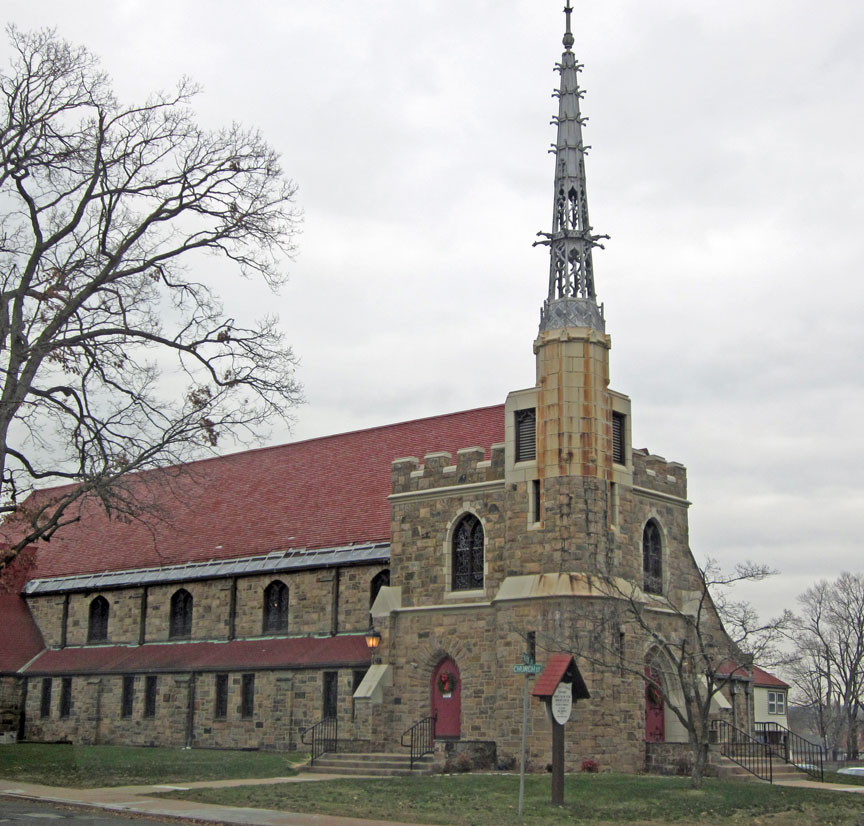
St Mary's Church
More Photos of St Mary's Church
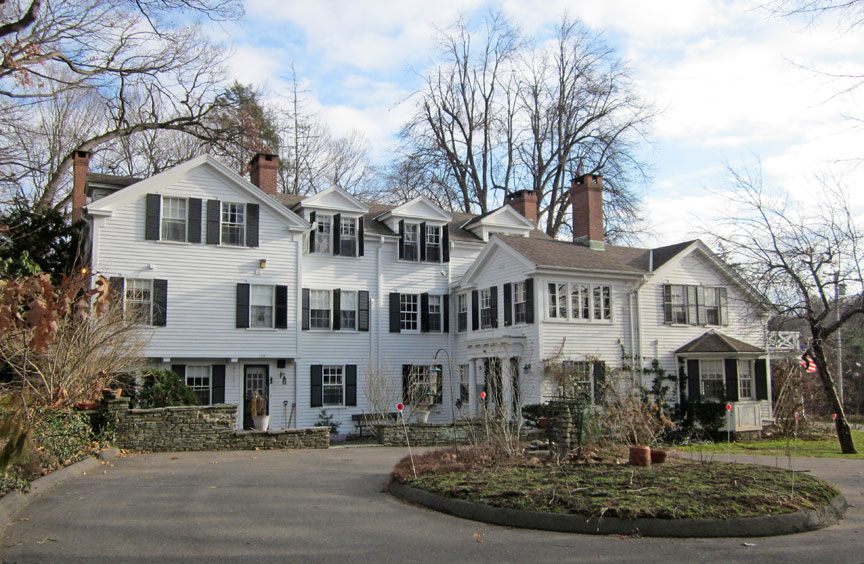
Mansion Inn
More Photos of the Mansion Inn
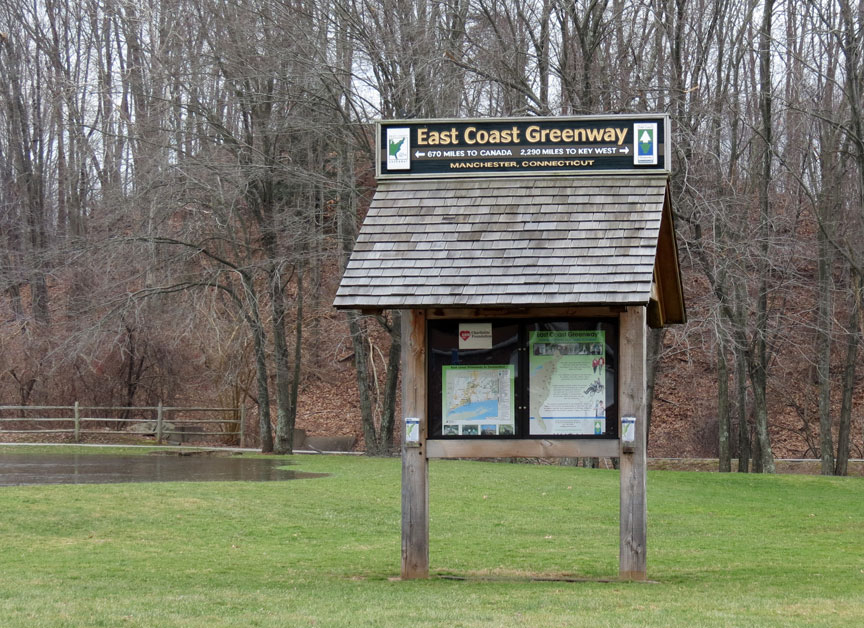
East Coast Greenway
Housing that Cheneys built for their workers.
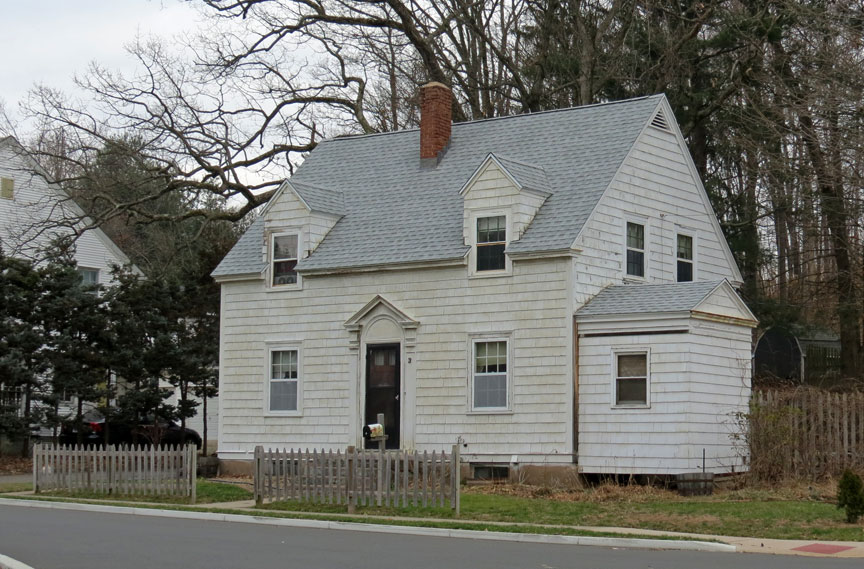
single-family
Houses were built from the 1860s (Eldridge Street) through the early part of the twentieth century (Fairfield Road). A mill foreman or manager might have a single-family house, whereas mill hands might live in a two-, three-, or four-family house. Newest immigrants might start out staying at a boarding house, or boarding with a family. As the workers prospered, they might move into a house and later buy the house. Other mills in Manchester provided worker housing, but the Cheney houses had larger yards and more amenities than those built near Union Mills and Globe Mills.

When the Cheney mills fell upon hard times, an auction was held (in 1937) to
sell off the worker housing. Many tenants bought the houses that they lived in.
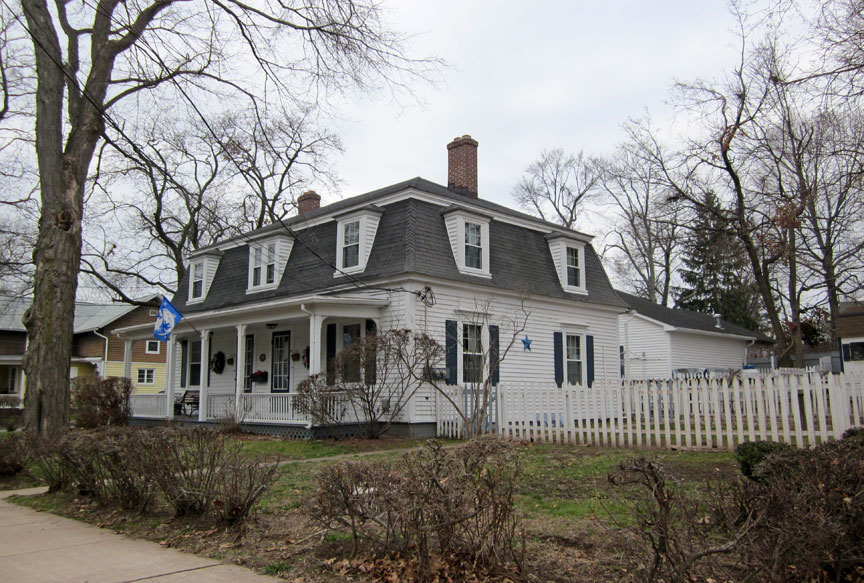
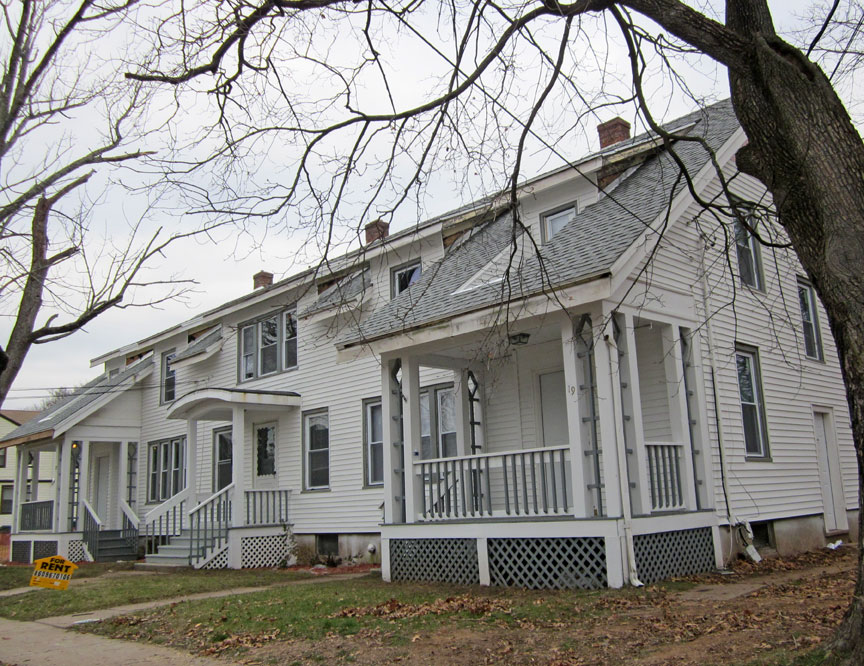
In the 1970s, Cheney worker housing was a factor in attaining the National
Landmark Historic District designation, which recognized the large and intact
District, including mills, mansions, and worker housing.
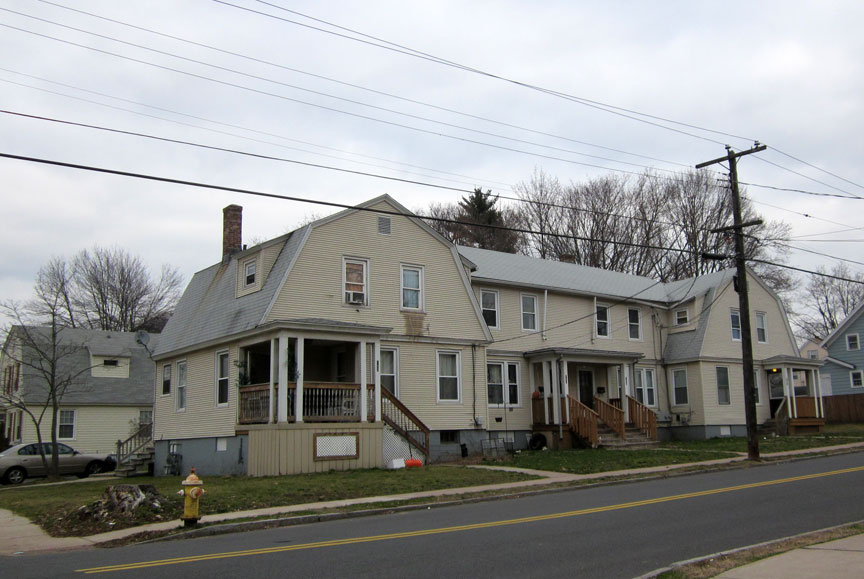
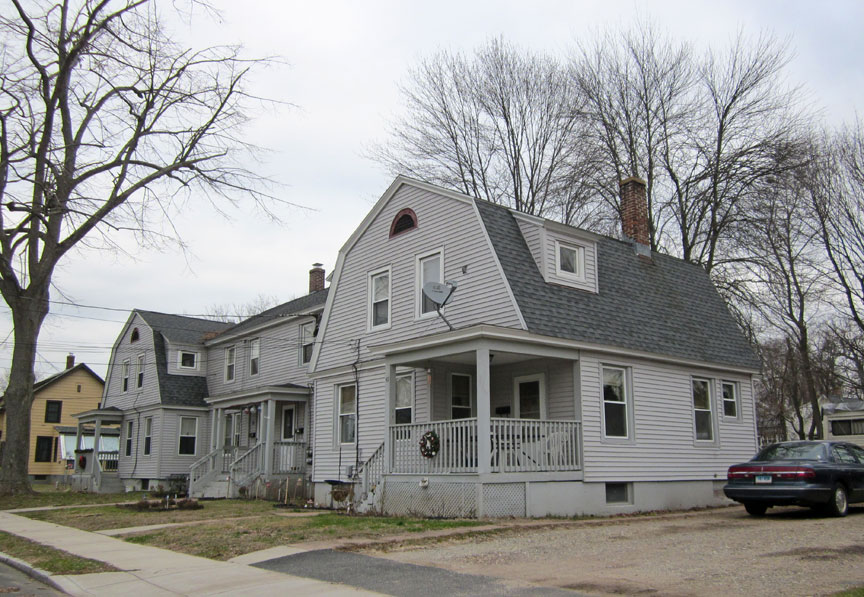

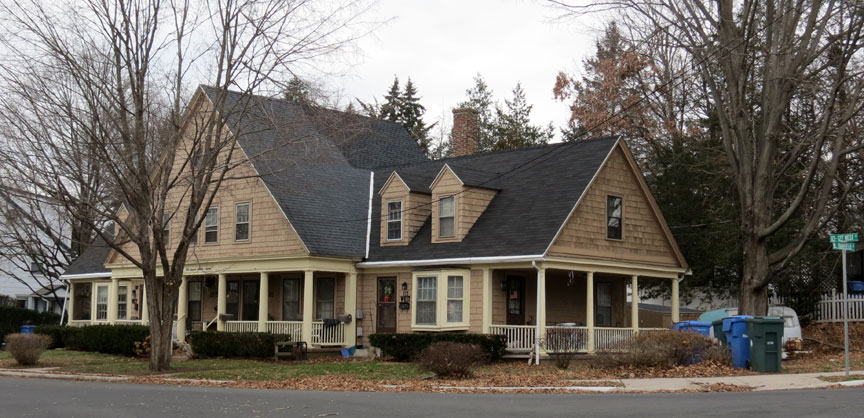
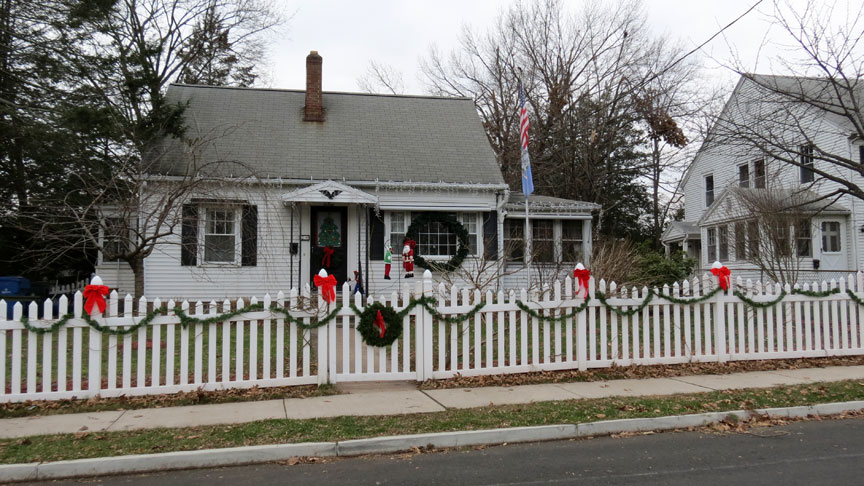


Lutheran Church